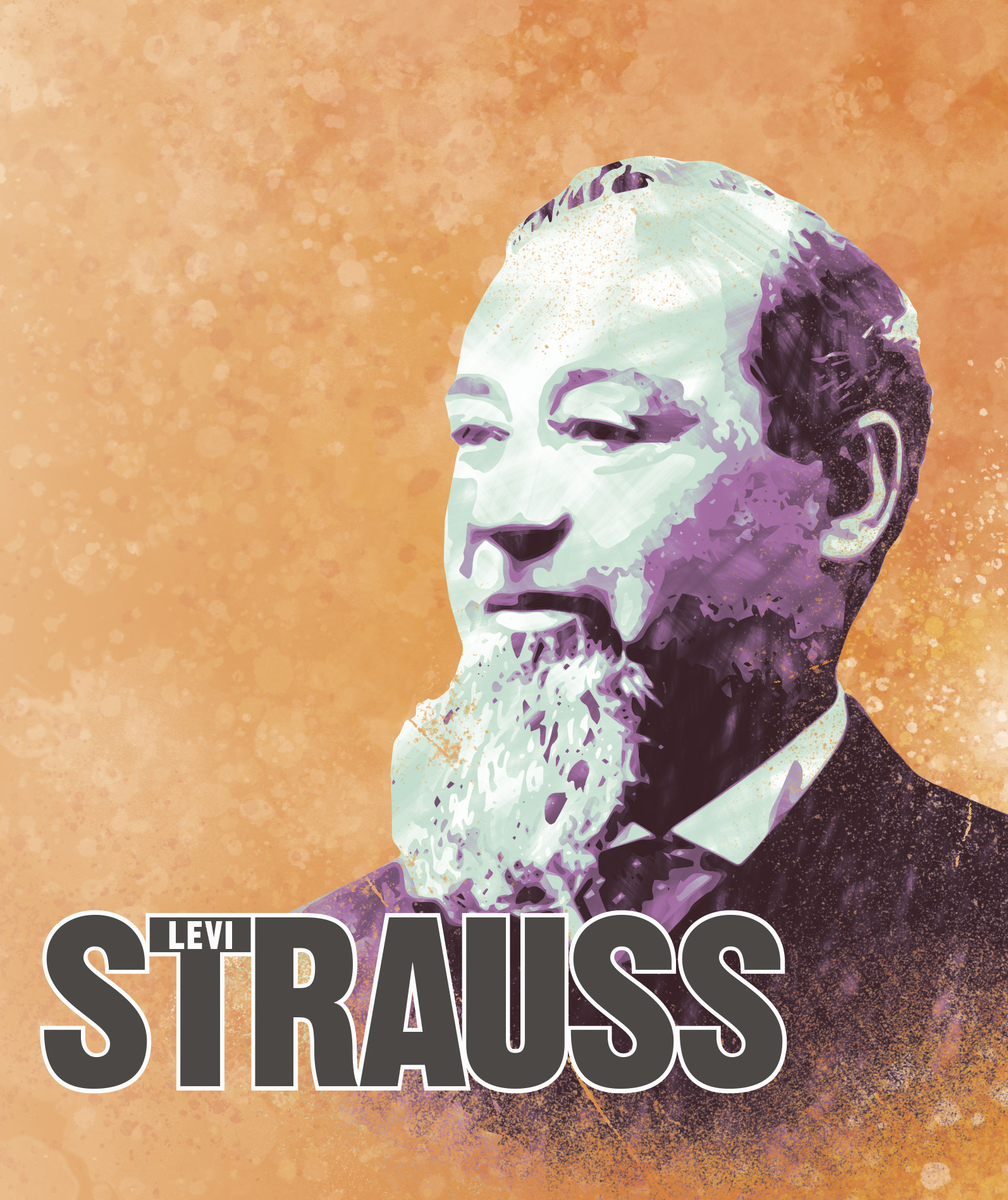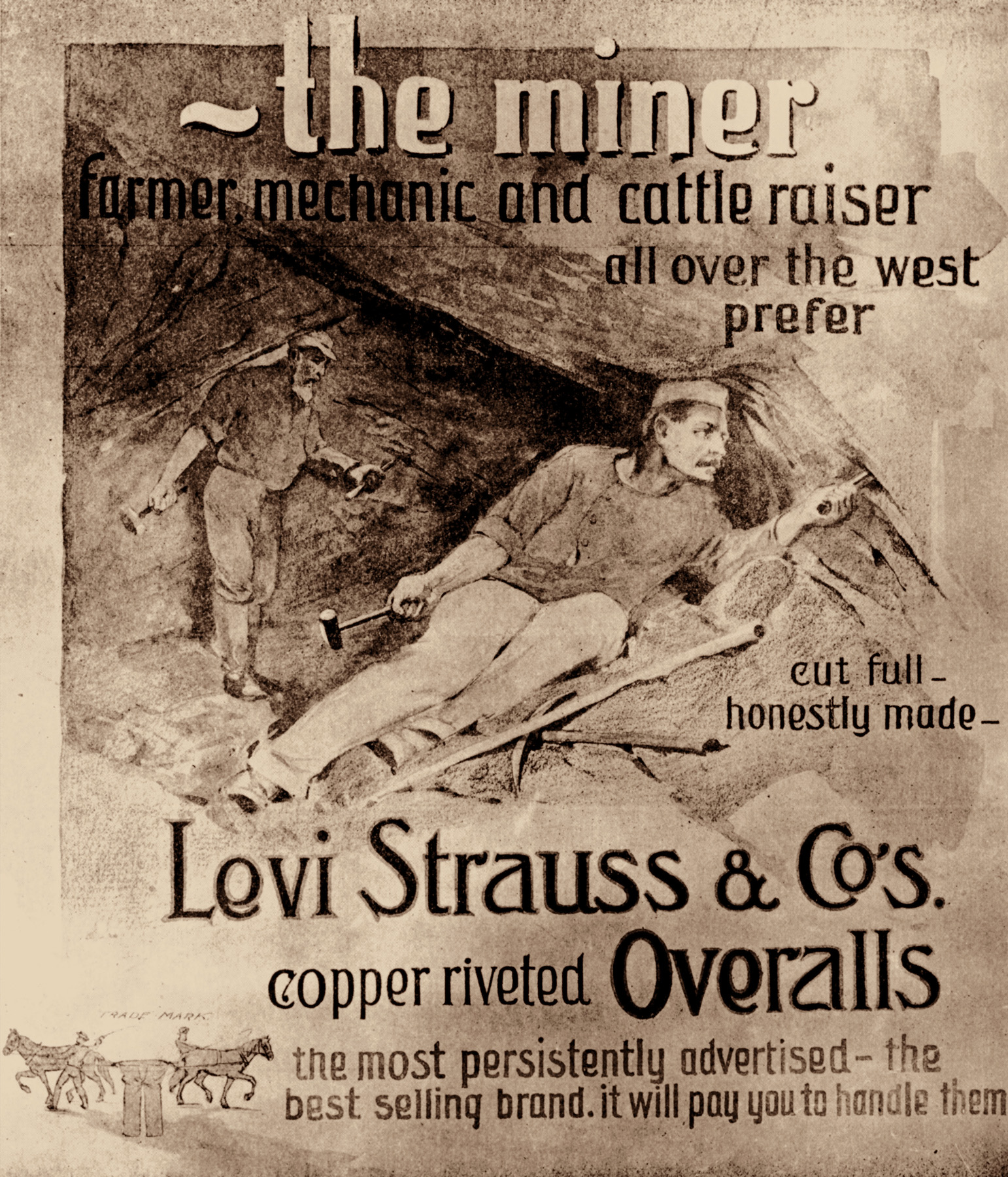
LEVI STRAUSS
1829–1902
When dry goods salesman Levi Strauss acquired a patent for using metal rivets to reinforce the pockets of work trousers, he helped create one of the world’s most iconic brands of blue denim jeans.
From Buttenheim, Germany, Levi Strauss (born Loeb Strauss) emigrated to the US at the age of 18 to join his brothers in their New York wholesale business. In 1853, in response to the Gold Rush, he moved west to San Francisco to set up a branch of the family enterprise under his own name: Levi Strauss & Co. He sold dry goods supplied by his brothers, including textiles such as denim, canvas for tents, bedding, and clothes.
His business thrived, and within a few years, he had sent more than $4 million back to New York. In 1873, Strauss and Jacob Davis—a tailor who was one of his customers—took out a patent on a new style of work trousers that were strengthened by metal rivets: the now ubiquitous blue denim jeans. By the 1880s, the durable, riveted jeans were bestsellers, and Strauss opened his own factory to make them. Strauss was a great philanthropist, supporting orphanages, setting up university scholarships, and providing funds to build a new railroad from San Francisco to the San Joaquin Valley.

This early advertisement for Levis Strauss jeans with copper rivets was aimed at laborers such as miners, farmworkers, and cowboys.
“I don’t believe that a man who once forms the habit of being busy can retire and be contented.”
Levi Strauss, 1895
MILESTONES
GOES WEST
Travels to California via Panama in 1853, to profit from the influx of miners attracted by the Gold Rush.
GRANTED PATENT
Together with tailor Jacob Davis, receives a patent for using metal rivets on the seams of jeans in 1873.
PHILANTHROPIC WORK
Among other projects, helps to fund 28 scholarships at the University of California, Berkeley, in 1897.
